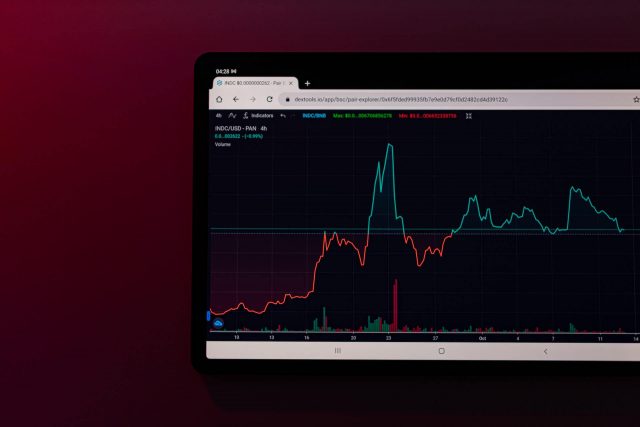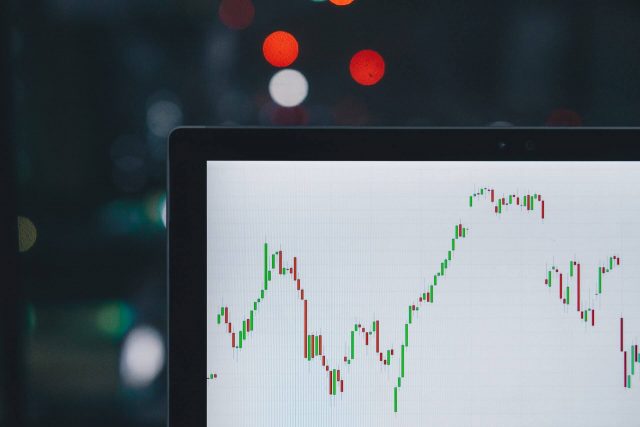
Not limited to stock investment, the basics of investing aiming for capital gains is to “buy low and sell high”. It seems simple at first glance, but the right knowledge is essential to minimize losses and ensure profits.
A stock price index can be used to find stocks that can be expected to rise in price in the future. There are multiple stock price indices, but the ones that are suitable for grasping the appropriateness of the stock price at a certain point in time are the “PBR (Price Book Value Ratio)” and “PER (Price Earnings Ratio).”
In this article, let’s take a closer look at PBR in particular. We will introduce the overview of PBR, what can be judged from the numerical results, how to use it for stock investment, and the difference from the frequently compared index PER. We will also explain points to note when investing in stocks based on PBR, so please refer to them as well.
table of contents- PBR is an index that can judge whether the stock price is undervalued or overvalued
- How to use PBR for stock investment
- Factors affecting PBR
- Points to note when investing in stocks based on PBR
- Using PBR as a judgment axis for stock investment
1. PBR is an indicator that can judge whether the stock price is undervalued or overvalued

First, let’s talk about the basics of PBR.
1-1. PBR basics and calculation formula
PBR is an abbreviation of “Price Book-value Ratio”, which means “price book-value ratio” in Japanese. It has long been used as an index to determine whether stock prices are undervalued or overvalued.
PBR is calculated by “stock price ÷ BPS (net assets per share)”. For example, if a company’s stock price is 5,000 yen and its BPS is 2,500 yen, its PBR is 2x.
“Net assets” used in the calculation is the total assets (cash, accounts receivable, fixed assets, etc.) owned by the company at the time of calculation, minus the liabilities (borrowings from banks, etc.) that will be obligated to be repaid in the future. It is a concept that refers to the amount of
If the net worth is positive, it can be inferred that the financial situation of the company is healthy, while if the net worth is negative, it can be judged that there is a possibility of having financial problems.
Next, let’s take a closer look at the information that can be determined from the PBR numbers.
1-1.What PBR figures represent
In general, the standard for looking at PBR figures is “1x”. If the PBR of a stock is less than 1x, it is considered undervalued, and if it is 1x or higher, it is considered overpriced.
However, as will be described later, if the PBR is less than 1x, it is not necessarily cheap. It’s also important to find out if there are other indicators or factors that are likely to increase the stock price. In addition, by calculating the PBR of a certain stock and comparing it with the PBR of its competitors, comparing the past PBR and forecast PBR of the same stock, etc., it is possible to judge whether the stock is undervalued from multiple angles. is important.
1-2.Difference between PER (Price Earnings Ratio) and PBR
PER (Price Earnings Ratio) is a stock index that is often compared with PBR. Both are indicators that can determine whether a stock is undervalued or overvalued, but there are some differences.
The first is the difference in the calculation method. PBR is calculated based on a company’s net assets, while PER is calculated based on net income with the formula “stock price ÷ EPS (net income per share)”.
For example, if the stock price is 3,000 yen and the EPS is 300 yen, the PER is 10 times. Stocks with a PER of 10 to 15 times or less are generally considered undervalued, although this varies by industry.
In addition, there is also a difference in whether it is appropriate to use short-term investment or long-term investment as a decision indicator.
PBR indicates whether the stock price is undervalued based on net assets, which have little fluctuation in the short term, so it can be said that it is an indicator that is more effective in long-term investment than in short-term investment.
On the other hand, PER is based on net profit that can fluctuate greatly in the short term, so it is often used as an indicator to judge undervalued or overvalued short-term investments.
2. How to use PBR for stock investment

So far, we’ve seen what PBR values tell us, and how they differ from commonly compared stock index PERs.
Next, let’s see how PBR is actually used for stock investment. In stock investment, PBR can be used as a criterion for value investment decisions and as a long-term investment indicator, so we will explain each in detail.
2-1. Use it as a reference for “value investment” decisions
Value investing is a method of investing in undervalued stocks (value stocks) that are priced lower than their intrinsic value.
On the other hand, there is a method called “growth investment” as a strategy that is paired with value investment. Growth investment involves investing in companies that are expected to grow in the future, so although the risk is high, it is possible to aim for a large return.
There are various reasons why stock prices are undervalued, but the most common reasons are “poor growth expectations,” “low interest,” and “large number of shares issued.” The advantage of value stocks is that the risk of a sudden drop in stock prices is low and it is possible to hold them stably without causing large losses in a short period of time.
Alternative examples of domestic value stocks as of June 2023 include “Takeda Pharmaceutical”, which boasts top-class sales as a domestic pharmaceutical company, “Kawasaki Kisen”, a major shipping company, and “Kawasaki Kisen”, one of the five major domestic trading companies. Marubeni”, etc.
PBR is effective when looking for this value stock. By calculating the PBR of a certain stock and comparing it with related stocks, it can be used as an important index to discover undervalued stocks.
Specifically, if the PBR is less than 1x, it is often considered a stock suitable for value investment. However, please note that the average PBR value varies depending on the industry, as described later.
2-2. It can be used as an index even during a recession
“Net assets” used in calculating PBR is assets minus liabilities, and is the investment from shareholders and the company’s profits accumulated from the past.
Since these do not fluctuate in the short term like the net profit used to calculate PER, the figures do not fluctuate greatly even during a recession when the company’s profit declines. Therefore, even when market conditions are unfavorable, PBR can be used as an indicator to accurately determine whether stock prices are undervalued or overvalued.
3. Factors affecting PBR

The things that affect PBR are the stock price and BPS (book value per share). I will explain in detail how each change is reflected in PBR.
3-1. Stock price
Since PBR is the stock price divided by net assets per share, it is naturally affected by the stock price. A rise in stock price leads to an increase in PBR, and a fall in price leads to a decrease in PBR.
Stock prices are primarily determined by the balance between supply and demand. If there are many people who want to buy a certain stock, the stock price will rise, and if there are few people, the stock price will fall. The supply and demand balance fluctuates in the following cases.
- Development of new businesses and products
- Fluctuations in the economy, interest rates, and exchange rates
- Changes in the international situation and natural disasters
3-2.BPS (Book value per share)
When calculating PBR, the denominator index is “BPS (book value per share)”. If the BPS increases, the PBR number will decrease, and if it decreases, the PBR will increase. In addition, although net assets increase in line with capital increases and profits, increases in net assets increase BPS, resulting in a decrease in PBR.
BPS is calculated by the formula of “net assets ÷ number of outstanding shares”.
The number of issued shares is the total number of shares that have already been issued among the authorized shares as stipulated by the company’s Articles of Incorporation. For example, if the number of issued shares decreases due to a share buyback or share consolidation, BPS will increase and PBR will decrease.
4. Points to note when investing in stocks based on PBR

As explained above, PBR is an important indicator for knowing whether the stock price is undervalued in stock investment. However, when using PBR as a basis for stock investment decisions, be aware of the following four points.
- A low PBR does not necessarily mean that the stock price will rise in the future
- Low PBR can be for negative reasons
- Unable to know what assets are
- Compare companies in the same industry
Let’s take a closer look at each.
4-1. A low PBR does not necessarily mean that the stock price will rise in the future
It is not recommended to decide to purchase immediately because the PBR is low, judging that it is cheap. This is because even if the stock price is cheap now, it does not mean that the stock price will rise in the future. By the way, the fact that the undervalued state continues indefinitely is called a “value trap”.
As a point to avoid falling into a value trap, it is important to check whether there is a “catalyst” (an event that triggers a movement in the market or stock price). Examples of catalysts include disclosure of strong financial performance, share buybacks, M&A, and new business/product development.
If you find a stock with a low PBR that is undervalued, check the company’s official website and financial information, investigate whether the catalyst will visit, and consider purchasing if you can expect a rise in the stock price.
4-2.PBR may be low for negative reasons
Also, a low PBR is not necessarily a good thing, and there are stocks whose PBR is declining for negative reasons. Therefore, it is important to consider in detail why stocks with low PBR are undervalued.
For example, in cases where the PBR is low due to deficit/deteriorating business performance, we must carefully decide whether to invest or not. In these cases, investors have given up on them because they cannot expect future development due to business contraction, and there is a possibility that the decline in stock prices will not recover in the future.
4-3. Unable to grasp the contents of assets
We introduced that PBR is an indicator of whether the stock price is undervalued relative to net assets, but let’s keep in mind that it does not take into account the content of this asset.
A company’s assets include cash, accounts receivable, inventory, buildings, land, and so on. Among them, there are companies with high volatility assets such as MicroStrategy, which owns Bitcoin (BTC).
Depending on the composition of assets, there are cases where PBR decreases due to many assets such as financial products with price fluctuations and assets whose appraisal values decrease over time, such as factories and machinery. Be sure to check the financial statements and understand the asset composition.
4-4.Comparing companies in the same industry
As mentioned above, PBR is generally recognized as a bargain stock if it is “less than 1x”. However, it should be noted that this figure is only a guideline and the average value varies depending on the industry. As shown in the table below, the average value of PBR differs depending on the industry.
| Fisheries, agriculture and forestry | 1.0 |
| Construction industry | 0.9 |
| groceries | 1.3 |
| Shipping industry | 0.8 |
| electrical equipment | 1.8 |
| transportation equipment | 0.8 |
| Precision mechanical equipment | 1.6 |
| banking | 0.3 |
source:Other Statistical Materials | Japan Exchange Group
We can see that the average PBR is high in the food and electrical equipment industries, and low in the banking industry.
When PBR is used as an indicator of undervalued stocks, it is possible to make more accurate judgments by comparing the average value of the industry to which the stock belongs and competitors in the same industry.
5. PBR as a judgment axis for stock investment
It is not easy to execute “buy low, sell high” in stock investment. In order to make a profit, and above all, not to lose money, it is necessary to master the stock price index including PBR.
Please refer to the contents of this article and use PBR for stock investment as a reference for value investment decisions and as an index during a recession.
The post Comprehensive explanation of how to use PBR (price book value ratio) for stock investment and points to note appeared first on Our Bitcoin News.

 2 years ago
191
2 years ago
191














 English (US) ·
English (US) ·